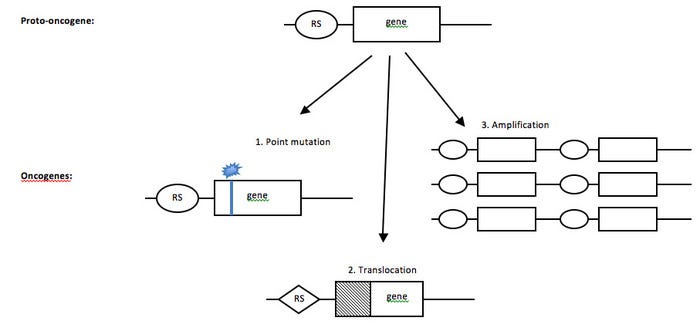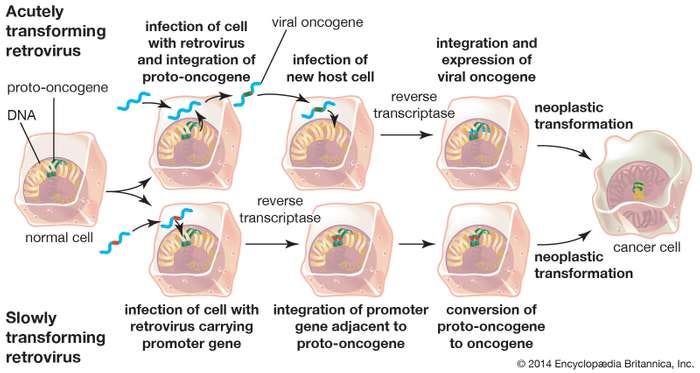Exploring Oncogenes: The Pathway to Cancer Development
Written on
Understanding Oncogenes and Their Role in Cancer
In healthy animal cells, there are genes known as proto-oncogenes which, when mutated or excessively expressed, can trigger uncontrolled cell growth and rapid division, resulting in tumor formation. Under specific conditions, these normal genes can evolve into cancerous genes.
Proto-oncogenes are crucial for several cellular functions, including:
- Promoting cell division
- Preventing programmed cell death (apoptosis)
- Regulating cellular growth and differentiation
- Participating in signal transduction
Can Proto-Oncogenes Induce Cancer?
Proto-oncogenes themselves do not cause cancer. Instead, it is the mutations leading to their overexpression that transform them into oncogenes, which are the genes associated with cancer.
Types of Mutations Converting Proto-Oncogenes to Oncogenes
The following mutations can lead to the conversion:
- Point mutation
- Gene amplification
- Chromosomal translocation
Oncogenes are sequences of nucleotides that code for proteins capable of triggering cancer. Upon mutation, a proto-oncogene's sequence may change or produce excessive amounts of protein, leading to unregulated cell division and tumor cell formation.

Mechanism of Proto-Oncogene Transformation
The initial discovery of oncogenes occurred in certain retroviruses—RNA viruses that utilize reverse transcriptase. These retroviruses were recognized as the first agents known to induce cancer in animals.

The process of oncogene formation can be summarized as follows:
- A normal cell containing a proto-oncogene is infected by a retrovirus.
- The virus integrates the proto-oncogene, converting it into an oncogene.
- This neoplastic transformation leads to the development of cancerous cells.
The Function of Tumor Suppressor Genes
Tumor suppressor genes are integral to cellular regulation as they slow down cell division, repair DNA errors, and facilitate programmed cell death. Consequently, they act as negative regulators of cellular growth, helping to mitigate tumor progression.
The Connection Between Oncogenes and Cancer
The presence of oncogenes is crucial in both human and animal cancers. Research has demonstrated that oncogene expression is essential not only for initiating cancer but also for sustaining it. The spread of cancer often occurs when tumor suppressor genes become inactive and oncogenes are activated, promoting excessive cell growth.
Key points regarding the relationship between cell growth and cancer include:
- Normal mechanisms of cell growth arrest and death are often disrupted in cancer, leading to unchecked proliferation.
- Cellular senescence, which regulates the lifespan of cells, is also compromised during cancer development.
- Cancer cells frequently exhibit heightened expression of membrane receptors like EGFR and PDGFR, which play significant roles in growth factor signaling.
The first video titled "Oncogenes: What is Cancer? Video Series" provides insights into the fundamental mechanisms of oncogenes and their role in cancer development.
The second video "Oncogenetics - Mechanism of Cancer (tumor suppressor genes and oncogenes)" delves deeper into the interactions between tumor suppressor genes and oncogenes in the context of cancer.
Momna Jamil is a biotechnologist and content writer.
Read more stories on Opinioc:
Why A Feminist?
We suffer not because of nature but more by a tradition
Cairo 6 7 8: Review and Afterthought
678 tugs at and pulls the burqa right off of both Egypt and the rest of the world
Dichotomy and Single-Sided Posturing of Coughlin — Reviewing “Khomeini’s Ghost”
For Coughlin, however, Khomeini’s legacy is single-pointed.